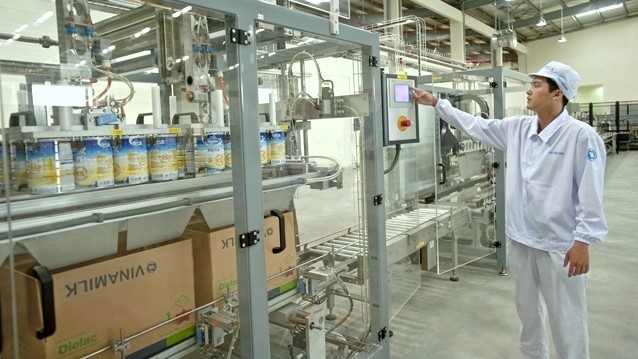2017 was a highly successful year for Vietnamese exports, as the country’s export turnover reached US$214 billion for the first time, an increase of 21% compared to 2016. The export market has been expanded and developed in a diversified and multilateral manner. The structure of export items is changing positively, mainly consisting of industrial products.
Furthermore, the number of exporters is also growing strongly, achieving high value across the region and the world, including Vinamilk, Trung Nguyen and Hoa Phat. Among them, Vinamilk is ranked among the top 300 Asian businesses and has invested in 10 farms raising 25,000 cows towards a complete production and supply chain meeting Global GAP and organic standards, which is eligible to provide products for the domestic market and export to high-end markets such as the US and Japan.
However, according to economist Pham Chi Lan, businesses such as Vinamilk are just a few. According to the World Bank’s “Vietnam at a Crossroads: Engaging in the Next Generation of Global Value Chains” report in 2017, Vietnam had only 300 capable firms participating in the global supply chains, but most of them only provide spare parts and have not been involved in the main production process. Of which only 2% are large enterprises, 2-5% are medium sized and the rest are small and micro enterprises.
"Vietnam has successfully integrated into multiple supply chains, but it has focused on industrial activities in the last stage, with low added value and weak domestic connectivity. Especially, room for local manufacturers is limited, while the rest belong to the FDI companies. Most of the high value added stages (innovation, design, or manufacturing of spare parts and core components) are carried out outside Vietnam. Important services are also often provided by foreign companies”, Lan said.
Explaining the reason, the female economist said that Vietnam's economy is "missing the handshake for linkage." The role of industrial zones in business linkages is still limited, as most of them are now geographically based, not supply chain based, to reduce costs and support production. Even Vietnamese enterprises' manufacturing process is less linked to the value chains. The proportion of products bought by foreign investors from local manufacturers is only 26.6% equivalent to the total input value of FDI enterprises, of which one part is purchased from other FDI businesses.
This restriction also comes from enterprises that do not have a clear strategic vision. "Many Vietnamese businesses have short-term thinking, are pursuing quantitative achievements and have not developed a brand yet. They also have not fully understood the distribution system, consumption culture and related laws of importing countries. Not to mention, domestic enterprises do not have enough financial resources to develop their own distribution channels and also do not have the capacity for international management,” said Doan Anh Tuan, Chairman of the Future Generation Tea Company.
Vietnamese enterprises still lack management skills and technology innovation, while facing difficulties in accessing finance, along with the lack of spillover from foreign partners and limited investment in advanced technology to help products meet high standards. According to a survey conducted by the Business Studies and Assistance Centre on small enterprises selected for the High Quality Vietnamese Goods Awards, the number of enterprises who have heard about VietGAP is 98% and GlobalGAP is 44 %, but only 11% of them have achieved VietGAP certification and 7% for GlobalGAP.
Tran Dinh Toan, Chairman of Vietnam Export Assistance Alliance, suggested that Vietnamese enterprises need to be more proactive in building brand and long-term strategy to access international markets and collaborate to find the output for their products, while developing new monopoly products to be able to compete in both domestic and international markets.
Especially, in the age of fourth Industrial Revolution, business development through e-commerce platform is crucial, from which establishing an e-commerce ecosystem to directly connect manufacturers with consumers and completely replace traditional business chains, as well as creating great opportunities for small and medium sized enterprises in Vietnam to join the global value chains.
To do that, according to Pham Chi Lan, the most important aspect is to focus on improving the quality of products meeting the requirements of international standards. At present, there are several products, such as Vi Que fish sauce (Phu Quoc) and salted egg-plant in shrimp pasty (Ngoc Lien Company), produced by small and medium enterprises, but that have been recognised by the US FDA certification to export to the US market, receiving a great welcome by local consumers but the export volume is not enough to meet the local demand. This is the most obvious demonstration that the quality will help boost the added value of the product very effectively.
In addition, according to Doan Anh Tuan, the State should have a comprehensive solution to support enterprises. Setting aside special support mechanisms on business conditions, taxes and fees, long-term investment is needed for education and training, especially for science and technology, as a strong economy requires modern synchronous process and technology that are not dependent on foreign countries to make products with high value added.
















